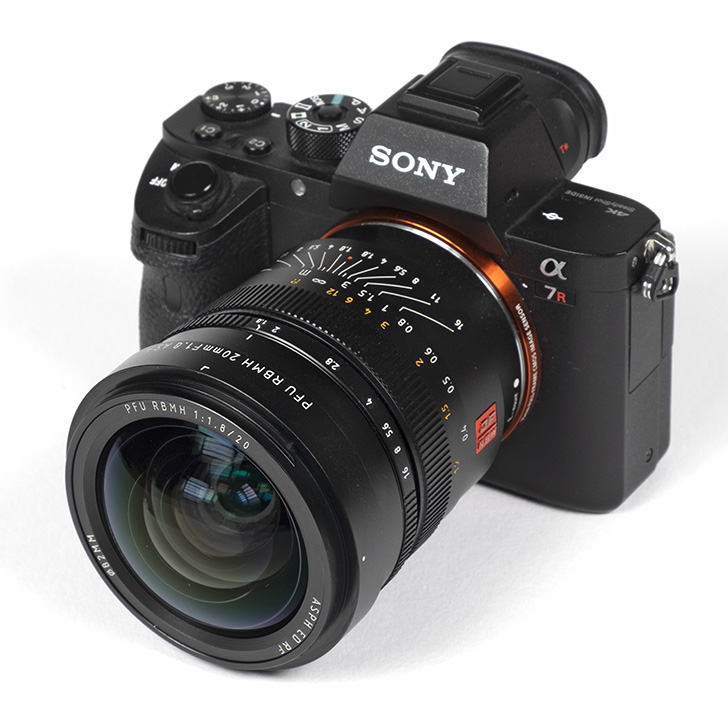by Klaus Schroiff, published January 2020
Introduction
In our previous review, we covered the Viltrox PFU RBMH 85mm f/1.8 STM (in Fujifilm X mount) and we were quite impressed by it. They are about to release more AF lenses in 2020 but they also have an ultra-wide prime lens in their lineup – the Viltrox PFU RBMH 20mm f/1.8 ASPH, an all-manual lens without electronic coupling, unfortunately. Generally, this shouldn’t be a huge deal with a 20mm lens and if needed you can use a magnified focus view on your camera for precise manual focusing. It is limiting the target audience for sure but moviemakers will actually prefer the all-manual nature – also because Viltrox implemented a step-less aperture ring.
The Viltrox lens feels like being carved out of a solid piece of metal and it is about as heavy (775g). The focus and aperture control rings are super-smooth and dampened just like in the good ol’ days. The lens uses an internal focusing mechanism thus the length remains constant throughout the focus range. The front element is bulb-like as you can see below so it’s not possible to mount filters straight on the lens. However, Viltrox found a curious workaround for this. Besides the (plastic) petal-shaped lens hood, they provide a 2nd (metal) barrel-shaped one. It’s rather tiny but you can mount 82mm filters to it. While the lens construction is of very high quality, we can’t say the same about the lens cap (for the standard hood) which feels a bit cheap and flimsy.
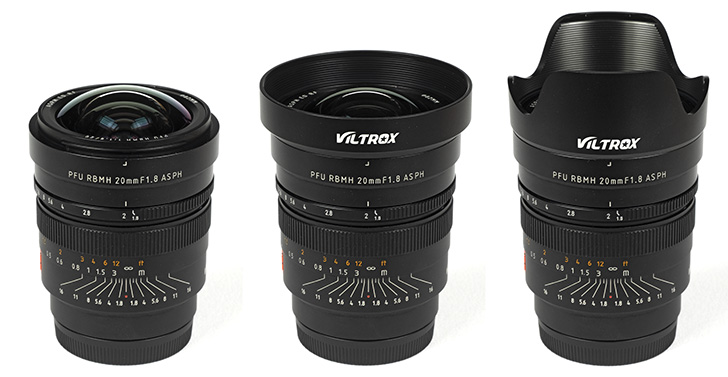
EXIF data is not provided so mechanisms such as image auto-correction. In-camera image stabilization is possible when setting the focal length manually to 20mm – we used this approach for the sample images actually.
Distortion
As mentioned, the Viltrox PFU RBMH 20mm f/1.8 ASPH can’t take advantage of image auto-correction due to the lack of electronic coupling. However, with respect to image distortions, this isn’t needed anyway. The lens produces a very low amount of pincushion distortion (0.5%) with a slight mustache-style subfrequency. That’s even more impressive considering the fact that we are talking about an ultra-wide lens here and such lenses are often not overly brilliant in this respect.
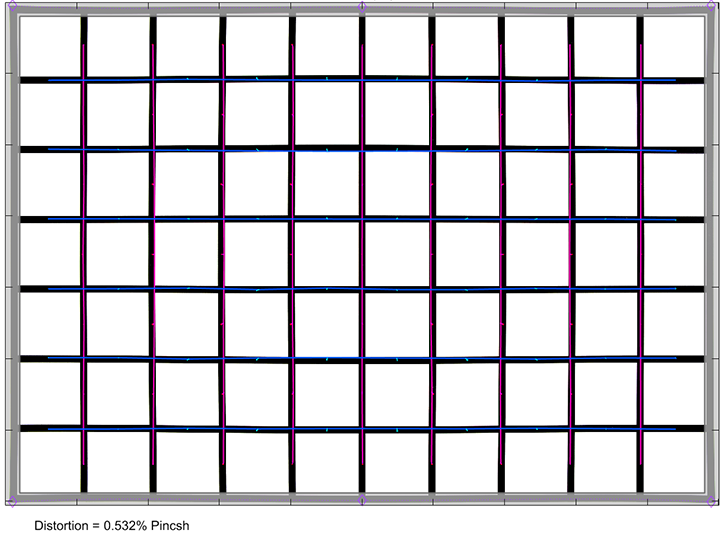
Vignetting
While image distortions are not an issue, the same can’t be said about vignetting. The Viltrox lens has a heavy light falloff of 2.4EV (f-stops) at f/1.8. That’s, of course, rather normal for a fast, full format ultra-wide lens but you will have to deal with this yourself rather than being able to rely on the camera or converter for correcting the issue. Stopping down reduces the vignetting but it remains rather high at ~1.6EV at medium aperture settings.
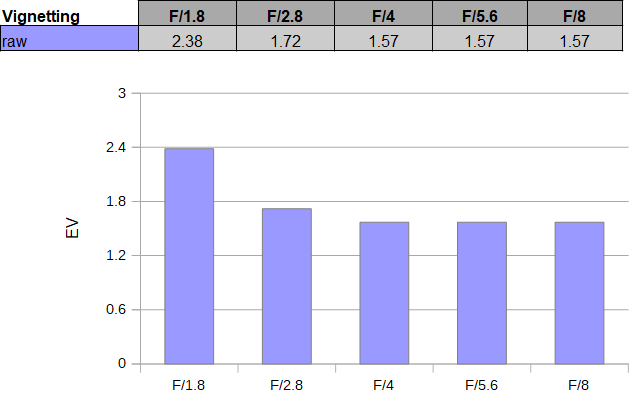
MTF (resolution)
The resolution characteristic is good but not without flaws (at 42 megapixels). At a fully open aperture, the dead center is excellent and the broader inner zone is very good. However, the outer image field is soft. Stopping down to f/2.8 boosts the quality substantially. The broader center zone is excellent here and the borders/corners improve to good levels. The best results are reached between f/4 and f/5.6 where the outer image field is lifted to very good quality. Diffraction effects set in at f/8 and they are impacting the quality from f/11 reducing the quality to good levels.
The field curvature is low. The centering quality of the tested sample was Ok.
Please note that the MTF results are not directly comparable across the different systems!
Below is a simplified summary of the formal findings. The chart shows line widths per picture height (LW/PH) which can be taken as a measure for sharpness. If you want to know more about the MTF50 figures you may check out the corresponding Imatest Explanations
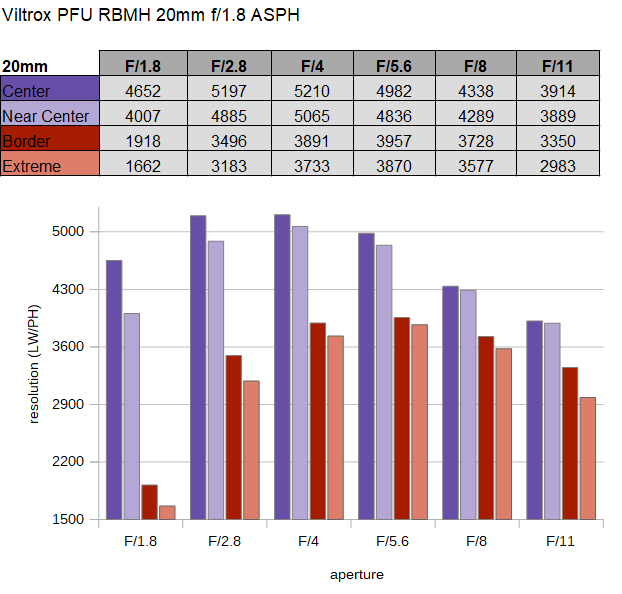
Chromatic Aberrations (CAs)
Lateral CAs (colors shadows) stay below 1px on the average at the image borders. They amplify in the extreme corners though. Please note that lateral CAs can be fully removed in most RAW converters – e.g. photoshop does so automatically even without a lens profile.

Bokeh
If you buy a fast lens, you either do it for low light or shallow depth-of-field photography. In the latter case, the rendering of the out-of-focus area (aka the “bokeh”) is of interest.
Ultra-wide angle lenses are usually struggling here due to the extensive use of aspherical elements that improve image quality but tend to introduce funny artifacts in out-of-focus highlights.
Interestingly, the Viltrox renders highlights nicely with a quite smooth inner zone (except a little blob if you look closely) and marginal outlining of the discs. With no less than 14(!) aperture blades, the aperture shape remains perfectly circular even at f/2.8.
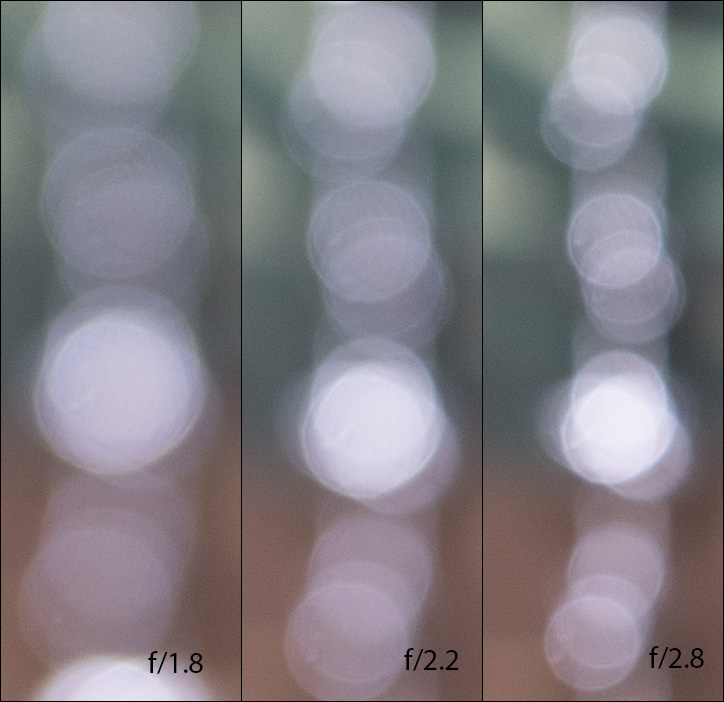
The highlight discs deteriorate to cat-eye shape in the image corners but that’s a normal vignetting effect.
We didn’t use our standard test scene for verifying the general blur rendition due to the extreme focal length. However, the real world sample image below may illustrate that the Viltrox lens is pretty good at it.

Sample Images
Competition
The 20mm segment is fairly crowded although interestingly, Sony doesn’t seem to take interest (as of the time of this review). There are 3ish other lenses that are competing with the Viltrox 20mm f/1.8 (shown to the left below). The one with the most comparable specs is the Tokina 20mm f/2 which is available both with AF and without (shown below in the center). The Tokina has a slight edge in performance but then it’s substantially more expensive. The Sigma 20mm f/1.4 DG HSM ART (to the right) is faster still and of comparable quality. However, it’s a monstrosity of a lens on Sony cameras also thanks to its DSLR heritage. Generally, we don’t recommend these merely adapted Sigma lenses due to their size – as you may notice below. Another contender is the new Tamron 20mm f/2.8 Di III OSD (not shown). It is actually a little more affordable than the Viltrox but obviously substantially slower. If you don’t need the speed, it may be the better choice though (we have yet to test this one).
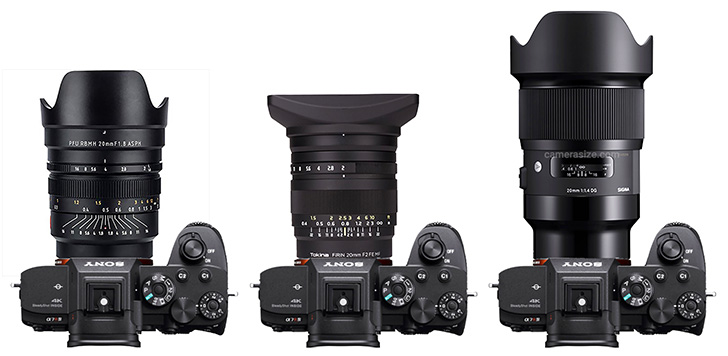
Visual comparison courtesy of camerasize.com.
The Viltrox PFU RBMH 20mm f/1.8 ASPH enters a rather crowded space but it has a couple of differentiators that set it apart from the rest of the gang. There is, of course, the fast maximum aperture of f/1.8. The image quality is perfectly fine in the image center whereas the borders are quite soft. This may or may not be important depending on the target application. If you are into shallow depth-of-field photography, this isn't really an issue for instance whereas for astro photography this isn't ideal. If you stop down, the quality improves quite a bit and it's really good at medium aperture settings. Lateral CAs are low and you don't have to worry about image distortions either. The vignetting is on the high side though. The quality of the bokeh (out-of-focus blur) is pretty good for a lens in this class.
The build quality is excellent thanks to a tightly assembled, all-metal-construction. The price you have to pay for the solid body is the high weight and it isn't a small lens either. Weather-sealing is not provided but that's no surprise at this price point. If you are into videos, you will love the dampened control rings and yes, it has a step-less aperture ring - but no stepped mode. On the downside, it's a fully manual lens with no coupling so if you can't live without AF, a camera-controlled aperture and EXIF data, this lens is not for you. The Viltrox lens comes with two different lens hoods - one that is optimized for the job and a 2nd one that accepts conventional, albeit large filters (82mm). It's a smart approach to have the choice without having to rely on aftermarket solutions. The quality of the lens cap could be better though.
Another differentiator is, of course, the price. At just under 400USD/EUR, it is not only very affordable, but it is also almost a steal considering the large aperture.
-
Optical Quality
-
Build Quality
-
Price / Performance


